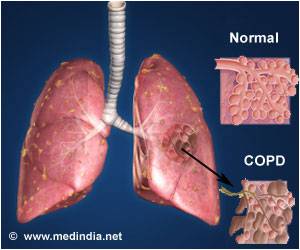A diet that is rich in whole grains is considered healthier as it benefits overall health of an individual. Whole grains or foods made from them contain all three parts of the kernel and naturally-occurring nutrients of the entire grain seed in their original proportions, states the Whole Grains Council.
The essential nutrients in the whole grains are lost during the refining process, as the bran and germ are removed, leaving only the endosperm. About 25% of the grains’ protein is lost when the bran and germ are removed.Increased consumption of whole grain is associated with reduced risk of type 2 diabetes, coronary heart disease, hypertension and lower likelihood of weight gain and also lowers mortality rate. Whole grain diets also help maintain regular bowel movements and promote the growth of healthy bacteria in the colon. The protective effects of whole grains have been attributed to the bran and germ including the bioactive components such as antioxidants, vitamins, and minerals.
The daily recommended intake of whole grains for the US population by the Whole Grain Council is listed below:
Age |
Girls/Women (servings) |
Boys/Men |
2-3 |
1.5 to 3 |
1.5 to 3 |
4-8 |
2 to 4 |
2.5 to 5 |
9-13 |
3 to 5 |
3 to 6 |
14-18 |
3 to 6 |
3.5 to 7 |
19-30 |
3 to 6 |
4 to 8 |
31-50 |
3 to 6 |
3.5 to 7 |
51+ |
3 to 5 |
3 to 6 |
The US dietary guidelines recommend that at least half of total grains be consumed as whole grains with the total amount of grains dependent on the individual’s age, gender, and physical activity.
A recent study published in the journal BioMed Central used the National Health and Nutrition Examination Survey (NHANES) data from 1999 to 2004 to study the relationship between whole grain intake and body weight measures in children, adolescent, and adults.
The cross-sectional survey of NHANES collected data about the health and nutrition status of the US population using a questionnaire. The study participants provided information on their dietary behaviors, health history, socioeconomic status, demographic information and two-day dietary recall.
The study found an inverse relationship between whole grain intake and body weight measures for adults including body mass index (BMI), and waist circumference (WC). Among adults who reported increased consumption of whole grains, both energy and fiber intakes were higher while BMI, waist circumference was lower when compared to non-whole grain consumer.
Over the past 12 years, there was a slight increase in whole grain intake. The whole grain intake was higher in 2011-2012 than all previous cycles. For adults, bread and ready to eat breakfast cereals are the top sources of whole grain intake, accounting for nearly 50% of the whole grains in the diet. For children, crackers and salty grain snacks have increased as a source of whole grains. Consumption of popcorn and oatmeal as a source of whole grain have decreased over time, and each account for 5–10 % of the whole grain intake in children.
Despite the availability of whole grains on the market, schools, and colleges, children and adults in the US are not meeting the whole grain recommendations. The introduction of whole grain pasta, bread and cereals have increased the intake of whole grains.
Higher intake of whole grain foods has improved the diet quality among children, adolescents and adults. The study participants who consumed whole grains reported lower intake of cholesterol. Children and adults who consumed the highest amount of whole grains had higher intakes of nutrients such as vitamin A, vitamin D, vitamin E, vitamin C, folate, calcium, and magnesium
However, the study also found that there was an increased intake of sugars and sodium among participants who reported increased consumption of whole grains. The findings suggest that increased consumption of sugars and sodium can be avoided by careful selection of whole grain foods.
Identification of the primary sources of total grains consumed by adults and children may help determine supplemental foods that could be reformulated to include more of whole grains. Reformulation of grain products such as biscuits, pasta, noodles, pizza base, and egg rolls, to include whole grains may allow for a wider variety of whole grain foods to be developed in the future.
The introduction of whole grain foods would result in increased consumption of whole grain. By increasing the proportion of whole grain-rich foods served in schools and colleges the consumption of refined grain by children may decrease.
Reference:
1. https://nutritionj.biomedcentral.com/articles/10.1186/s12937-016-0126-4
2. http://wholegrainscouncil.org/
Source-Medindia















